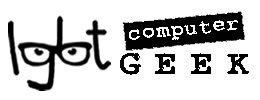Most modern PCs and laptops are pretty speedy when you first get them. Give it a few years though and problems with start-up speed and loading times soon creep in. This can lead to even the most basic tasks – such as emailing or using the internet – seemingly taking forever.
Before you throw in the towel and sort out a new machine, there are some simple steps you can take to help speed up your PC again. Take a look at these top five tips below, none of which will cost you a penny.
1) Uninstall unwanted programs
The programs installed on your PC don’t just take up hard disk space; some run in the background consuming resources, slowing down startup times and your computer’s overall performance.
To keep a lean, focused selection of applications installed on your computer and remove those you don’t need, click Start > Control Panel > Uninstall a program (Windows 7) or right-click Start and select Programs and Features (Windows 8.1 and 10) for a list of all the programs you have installed.
Scroll through the list and choose which programs to keep and which ones to remove. Click to highlight one you no longer want, then click Uninstall (or Uninstall/Change) from the top toolbar.
2) Limit startup programs
Programs that run when you start your PC can dramatically slow down startup times. To fix this in Windows 7, click Start, type run and press Enter. Type msconfig, press Enter, then click the Startup tab to see a list of programs that run on launch.
In Windows 8.1, you can get to the same list by right-clicking the taskbar and selecting Task Manager. Click More details (if shown), then click the Start-up tab.
In both cases it’s possible to disable items listed here (untick them in Windows 7 or right-click them and select Disable in Windows 8). The trick is knowing which ones are safe to disable. The best way to do this is to search online for more information. Windows 8.1 lets you do this from the Start-up list – right-click an item you don’t recognise and select Search online. Restart your PC to test the impact.
3) Remove preinstalled bloat
PC manufacturers have got into the nasty habit of pre-loading their systems with great amounts of proprietary programs, trial versions and other unneeded software – most of which is unnecessary and a lot of which can impact on startup times and PC performance.
Most of this so-called ‘bloatware’ can be safely removed to speed things up. Identifying bloatware can be hard, but there’s a great free tool called Should I Remove It?, which provides useful information and advice about all the software on your PC, including whether to uninstall it or not.
4) Remove junk and temporary files
As your computer works, it builds up lots of temporary files and other cached data, which can clog up your hard disk and ultimately cause your PC to slow. Clearing these out every so often is a good idea.
Click Start > Computer (Windows 7) and right-click your system drive (usually C:) and select Properties. Under the General tab, click Disk Clean-up. In the box that opens, click Clean up system files, then tick all the boxes in the Files to delete section and click OK.
For Windows 8.1, right-click Start > click File Explorer and right-click your system drive (usually C:) and select Properties. Under the General tab, click Disk Clean-up. In the box that opens, click Clean up system files, then tick all the boxes in the Files to delete section and click OK.
5) Clean up your web browser
If browsing the web becomes slow, then there are several things you can do. Precise instructions will depend on which web browser you use (Chrome, Firefox, Internet Explorer etc), but the main steps worth taking are common.
Clearing out the cache can have a big impact – this is temporary data that’t intended to make web browsing faster, buy can end up doing the opposite if too much build up over time.
Chrome
In the browser bar, enter:
chrome://settings/clearBrowserData
Select the following:
-Browsing history
-Download history
-Cookies and other site and plug-in data
-Cached images and files
From the Obliterate the following items from: drop-down menu, you can choose the period of time for which you want to clear cached information. To clear your entire cache, select the beginning of time.
Click Clear browsing data.
Exit/quit all browser windows and re-open the browser.
Internet Explorer 9 and higher
Select Tools (via the Gear Icon) > Safety > Delete browsing history….
If the menu bar is hidden, press Alt to make it visible.
Deselect Preserve Favorites website data, and select:
-Temporary Internet files or Temporary Internet files and website files
-Cookies or Cookies and website data
-History
Click Delete. You will see a confirmation at the bottom of the window when the process is complete.
Exit/quit all browser windows and reopen the browser.
If the above steps don’t speed up your machine enough, then there are additional steps that are more technical, which I can help you with – contact John Mosley to book an appointment.

